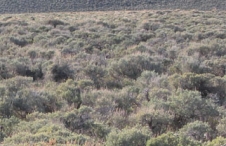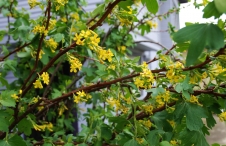Purple Sage
Found in many of the Western state deserts, the purple sage grows well throughout the Great Basin, particularly in Southern Nevada. There are three primary varieties of purple sage found in Nevada: the carnosa, argentea and dorrii, the primary variation being in leaf size and location. The purple sage is a perennial shrub that was used as both a food source and a medicinal plant by the native peoples of Nevada, the Paiute, Washoe and Western Shoshone Indians.
The purple sage produces highly nutritional seeds that can be eaten raw or dried and ground into flour. Its thick leaves last for most of the year, and can be harvested well into the winter months. These leaves were used to make tea, primarily used as a remedy for colds, but also in general treatment of illness and pain relief.
This plant belongs to the mint family, which is evident in its fragrance, a combination of mint and sage to create a unique and recognizable odor. When in bloom, its flowers are extremely fragrant and are a deep violet-blue. It is a small to medium-sized shrub, rarely reaching more than 60 centimeters in height. It has thick, gray, rounded leaves and does well in rocky environments due to its need for good drainage. After maturation, it needs little water. The purple sage can be found primarily in rocky, dry slopes usually at elevations between 5,000 and 10,000 feet. It grows well in association with sagebrush, and is usually the dominant member of its community.
The scientific name Salvia derives from the Latin verb salveo, which means “to save,” referring to the medicinal properties of this plant.




